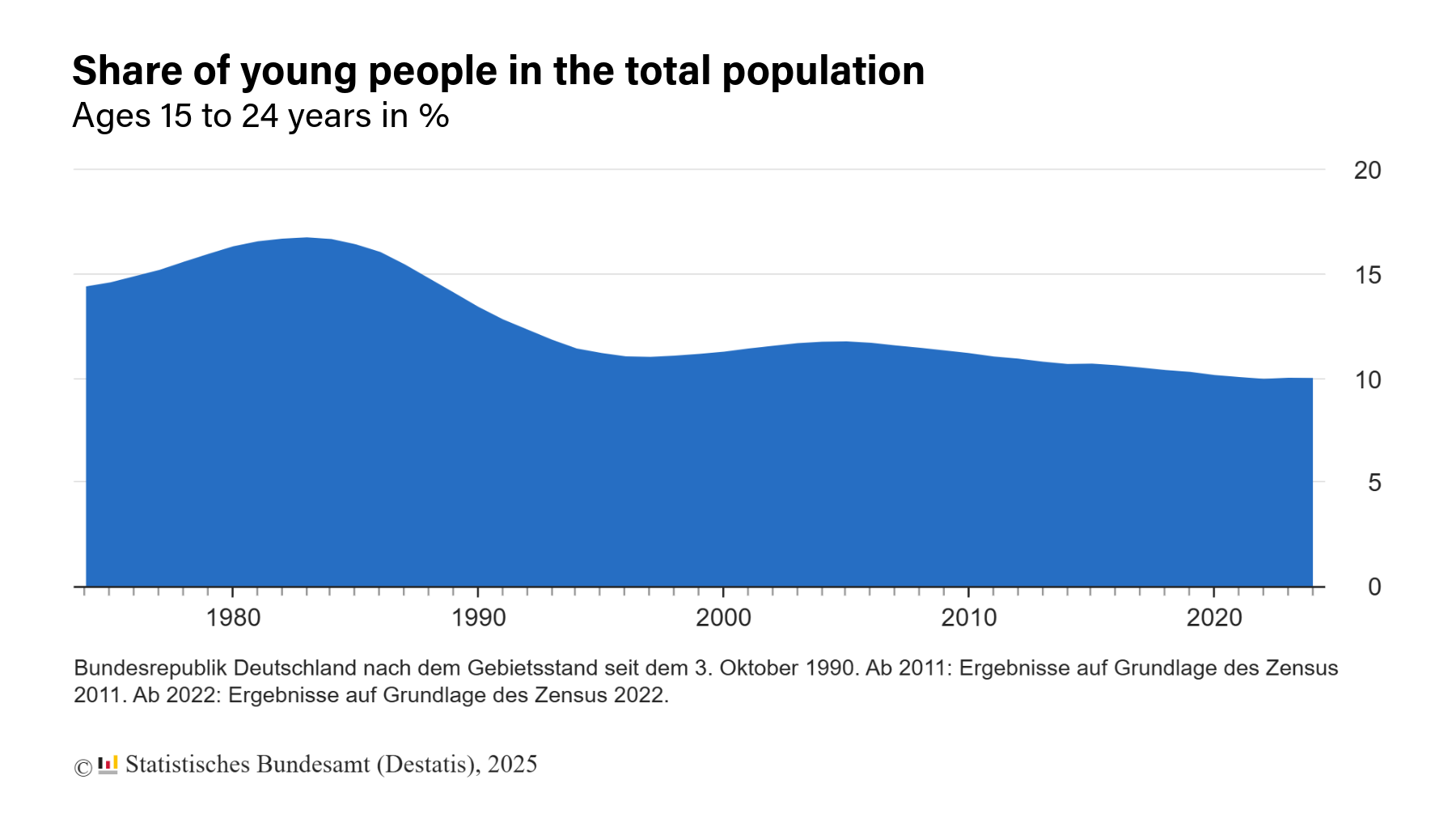
Germany continues to see a historically low proportion of young people within its overall population. As of the end of 2024, approximately 8.3 million individuals aged 15 to 24 lived in the country, accounting for just 10 percent of the total population, according to the Federal Statistical Office (Destatis). This share has remained nearly constant since late 2021, reflecting a significant demographic shift compared to previous decades.

The stabilization of the youth population share is largely due to immigration, particularly following Russia’s invasion of Ukraine in 2022. Many young refugees and migrants arrived during this period, preventing a further decline. Without this influx, the youth proportion would have fallen to about 8.6 percent by the end of 2024. Among people with a migration background, defined as those who immigrated themselves or whose parents immigrated since 1950, the proportion of young people aged 15 to 24 was significantly higher at 12 percent. This group’s younger age structure contrasts with the wider population and highlights the important role migration plays in demographic renewal.
Especially notable is the high share of youth among descendants of immigrants born in Germany, with 20.7 percent aged 15 to 24. Similarly, those with one immigrant parent show a comparable share of 20 percent, while immigrants themselves accounted for 9.2 percent. These figures emphasize how younger generations with migration roots contribute to the youth demographic in Germany.
The share of young people varies significantly across Germany’s regions. Bremen recorded the highest proportion at 11.1 percent, followed by Hamburg and Baden-Württemberg, each with 10.5 percent. In contrast, eastern states such as Brandenburg (8.7 percent), Mecklenburg-Vorpommern, and Saxony-Anhalt (both 8.9 percent) have the lowest shares of young people. These disparities reflect ongoing demographic imbalances and challenges in eastern Germany, where population aging and youth outmigration are more pronounced.
The current youth population shares pale in comparison to historical highs. During the early 1980s baby boomer peak, approximately one in six people, 16.7 percent, were aged between 15 and 24. In 1983, this equated to around 13.1 million young individuals, demonstrating how much the youth proportion has declined over the last four decades.
Germany’s youth population also falls below the average for the European Union. At the start of 2024, the EU-wide average for those aged 15 to 24 was 10.7 percent. Ireland leads with the highest youth share at 12.6 percent, followed by the Netherlands (12.3 percent) and Denmark (12.2 percent). Bulgaria and Lithuania recorded the lowest proportions, at 9.2 and 9.5 percent respectively.
These demographic trends underscore the critical role of immigration in offsetting Germany’s aging population. Without migration, the decline in youth numbers would be more severe, with potential consequences for the country’s workforce, economic growth, and social systems. Maintaining and integrating a younger migrant population will be essential for Germany’s demographic and economic sustainability in the years to come. Policymakers face the ongoing challenge of fostering integration, education, and employment opportunities to support this vital demographic segment.